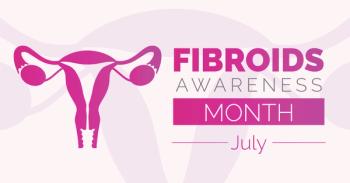
Treatment Selection of GnRH Antagonists for Uterine Fibroids
Drs Jessica A. Shepherd and Mauricio Abrão share recommendations for the treatment selection of GnRH antagonists when treating patients with uterine fibroids.
Episodes in this series

Mauricio Abrão, MD: There are some important things to consider because sometimes we need a more efficient antiestrogenic effect in the beginning and then we can transition to an add-back for this purpose. This is something that we must consider. Let me know your thoughts.
Jessica A. Shepherd, MD, MBA, FACOG: I definitely think that we have more room to go, but having 2 on the market is significantly helpful for practitioners. And even outside of OB/GYNs, this allows mid-levels and family practitioners and internal medicine doctors who see these patients with heavy menstrual bleeding to allow them some impact in decision-making when it comes to how we can help our patients with their heavy menstrual bleeding. What would you say for those who are viewing, Mauricio? What recommendations do you have for colleagues on treatment selection and considerations for GnRH [gonadotropin-releasing hormone] antagonists in general?
Mauricio Abrão, MD: One thing to consider is the cost of the medication for patients who have insurance that doesn’t cover the medication. This is very relevant in Brazil because we participate in the trials but we don’t have this medication because of this issue. It’s the same in many countries all over the world. The situation is to define the criteria as you mentioned before, to discuss with the patients to check the cost of the medication to see if it’s affordable for them, and how much we’re going to use this medication. These are things related to the real world. Do you agree with me?
Jessica A. Shepherd, MD, MBA, FACOG: I absolutely agree with you. As we start to use these agents more, we’ll start to see them decrease in prices. But it’s important for us as we’re going through that struggle with cost that we stay the course and make sure we still recommend and prescribe them so that they aren’t lost and patients continue having experience with them and being exposed to them.
Then there’s 1 more that has some investigational data within the UF [uterine fibroid] treatment spectrum called linzagolix. There are investigational data being done right now. But based on the data you’ve seen on it, how do you anticipate that this particular agent is going to fit into the treatment spectrum when we think of GnRH antagonists in medical management?
Mauricio Abrão, MD: This would be another option. When we have more options, it’s better for the patient. It’s another option in the spectrum of treatments. This may be part of the future options for the medical management of the fibroids. Do you agree with me?
Jessica A. Shepherd, MD, MBA, FACOG: It’s good to have healthy competition within the state of things that we’re able to offer patients. That’s only going to push us forward when we think of research advancing this broad field of heavy menstrual bleeding and fibroids. It’s high time that women’s health has more options to offer because this is something that has been plaguing women’s lives for so long. We owe it to ourselves in the medical community, as well as in research, technology, and innovation to advance what we’re able to offer women.
Transcript Edited for Clarity
Newsletter
Get the latest clinical updates, case studies, and expert commentary in obstetric and gynecologic care. Sign up now to stay informed.













